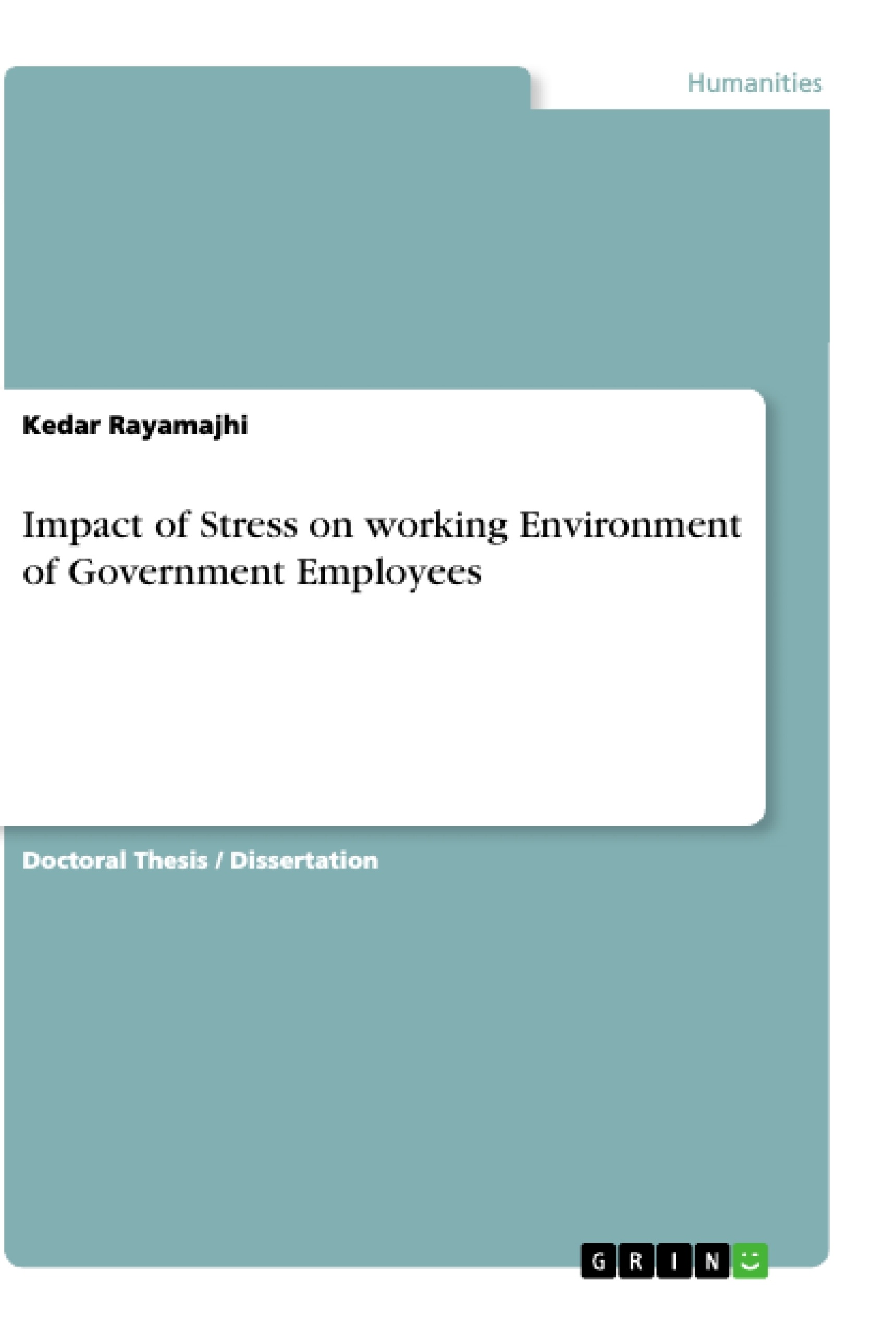The main objective of this study is to compare the organizational stress in reference to the organizational role, values, coping strategies and conditions of mental health of technical and non-technical government officers working in different ministries and departments of Nepal government.
The last couple of decade’s researches has established the complexity of the construct, and places the individual stress experience within a larger organizational context of people’s relation to their job. Recently, the work on role stress has expanded nationally and internationally and has led to new conceptual models. The focus on role stress and its relation with mental health; value, and the coping strategies of individual promise to yield new perspectives on interventions to alleviate the stress.
Earlier studies showed that the contribution of various aspects of role stress is causing adverse effects on mental health of employees and were found different from one study sample to another. In light of the above study, a need is felt to investigate the relationship between role stress and mental health among Nepalese civil servants working in different positions. The Nepalese political culture and unionism are also the major determinants of role stress. Government authority should focus on visioning and developing strategies in advance to make the government functionaries effective and efficient by conducting proper research in the government system of Nepal in relation to role stress and its components.
Therefore, the present study of stress and mental health of government employees is in relation with their role stress and mental health. The research is quantitative in its approach. For the purpose of the study, 284 Nepalese civil servants were selected randomly. The result, on the basis of research hypothesis, showed that class III officers reported higher level of stress than the class I and class II ones, but there was no significant difference of stress among the I, II and III class officers. So, it indicated that level of stress in class II officer was similar to that of I and III class officer because of their duel nature of work.
Inhaltsverzeichnis (Table of Contents)
- CHAPTER ONE
- INTRODUCTION
- Background of the Study
- Statement of the Problem
- Significance of the Study
- Theoretical Framework
- Conceptual Framework of the Study
- Operational Definitions of Key words
- Delimitation of Study
- Limitation of study
- CHAPTER TWO
- LITERATURE REVIEW
- Organizational stress
- Job stress
- Work-related Stress
- Theoretical Approaches of Stress and Stress Management
- Coping with Stress
- Mental Health
- Mental Health in Organization
- CHAPTER THREE
- RESEARCH METHODOLOGY
- Methodological Approach
- Research Design
- Sampling Design
- Data Collection Strategies
- Formation of Data Collection Instruments
- Validity and Reliability of Data Collection Tools
- Scales of Measurement of Data
- Data collection procedure
- Data Analysis Plan
- CHAPTER FOUR
- FINDING AND DISCUSSION
- Demographic Characteristics of Respondents
- Level of stress on Government Officers Related to Their Job Roles
- Factors Related to Stress Level of the Technical and Non-technical Job Holders
- Difference in the Level of Total Role Stress between the Officers Having the Individualistic Values and the Collectivistic Values
- Comparison of the Relationship between Job-Stress and Mental Health of Government Officers
- Effects of Coping Strategies in Relation to Role Stress and Mental Health
- Gender-Wise Analysis of Role Stress, Values, Mental Health and Coping Mechanism
- Relationship between Organizational Role and Mental Health
- CHAPTER FIVE
- KEY FINDING, SUMMARY, CONCLUSION AND RECOMMENDATION
- Key Findings of the Study
- Summary of the Study
- Conclusion of the Study
- Recommendations from Study
Zielsetzung und Themenschwerpunkte (Objectives and Key Themes)
This study aims to investigate the impact of stress on the working environment of government employees. The research focuses on exploring the relationship between job-related stress and mental health among government officers. It also examines the role of coping strategies in managing stress and their impact on mental well-being.
- Impact of stress on the working environment of government employees
- Relationship between job-related stress and mental health
- Role of coping strategies in managing stress
- Influence of individualistic and collectivistic values on stress levels
- Effectiveness of coping strategies in mitigating the effects of stress
Zusammenfassung der Kapitel (Chapter Summaries)
Chapter One provides an introduction to the study, outlining the background, statement of the problem, significance of the study, theoretical framework, and operational definitions of key words. Chapter Two presents a comprehensive literature review on organizational stress, job stress, work-related stress, theoretical approaches to stress management, and coping strategies for managing stress. Chapter Three details the research methodology, including the methodological approach, research design, sampling design, data collection strategies, and data analysis plan. Chapter Four presents the findings and discussion of the study, focusing on the demographic characteristics of respondents, levels of stress among government officers, factors related to stress levels, and the relationship between job stress and mental health. This chapter also examines the effects of coping strategies on stress and mental well-being.
Schlüsselwörter (Keywords)
The key terms and focus topics of this research include job stress, mental health, coping strategies, organizational role stress, individualistic values, collectivistic values, and government employees. The study explores the relationship between these concepts, seeking to understand the impact of stress on the working environment of government employees and identify effective strategies for mitigating the negative effects of stress on mental health.
- Quote paper
- Kedar Rayamajhi (Author), 2017, Impact of Stress on working Environment of Government Employees, Munich, GRIN Verlag, https://www.grin.com/document/961406



